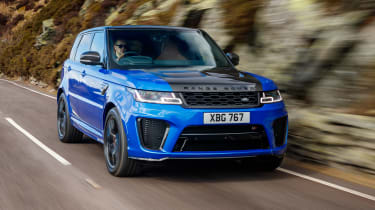Range Rover Sport review - ride and handling
Feels its weight, but is more controlled than the big Range Rover on-road
While its performance might justify the Sport branding, a 2.5-ton kerb weight and a very high centre of gravity mean its dynamics were always going to face a tough test doing the same. Compared to the sharpest large SUV on sale, Porsche’s Cayenne, this is a car that can’t help but feel a little aloof, and it never shrugs off its bulk or shrinks around the driver quite like its German rival.
Yet with the assistance of the active locking differential that’s fitted to the rear axle in more powerful variants, and switched into its more focused dynamic mode (accessed by a rotary dial which also switches between the car’s varying ‘Terrain Response’ modes, it sharpens up the steering, damping and throttle response and loosens the stability control), it can demonstrate a remarkably tail-led balance when really pushed. It’s not a car that feels natural driven at (or slightly beyond) its limits, though, and a calmer, slow-in, fast-out approach to corners helps quell understeer and imbue the car with a more natural flow.
Of more importance to many buyers will be ride quality, and on the whole the Range Rover Sport impresses. From the driver’s seat it’s an extremely cossetting thing to pilot, and long journeys are dispatched with ease thanks to its smooth ride (Land Rover claims class-leading wheel travel) and exemplary noise insulation. Things aren’t quite as relaxing in the back, where the car’s reaction to bumps is more clearly felt, while at typical motorway cruising speed the roar of the rear tyres can creep into the cabin over some road surfaces.


